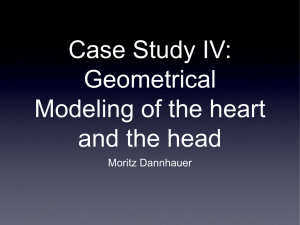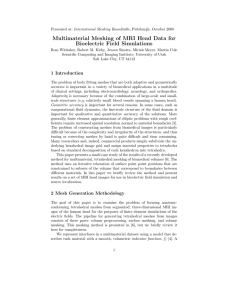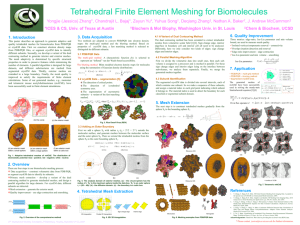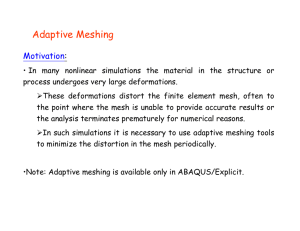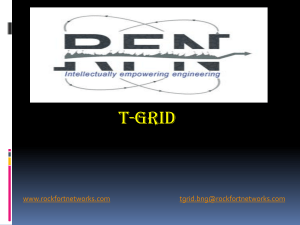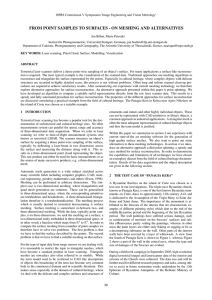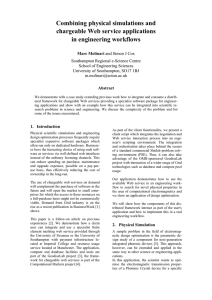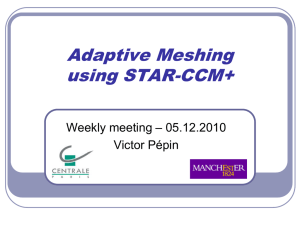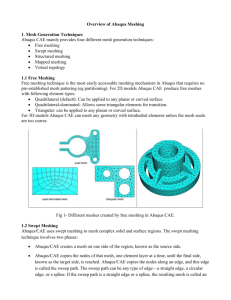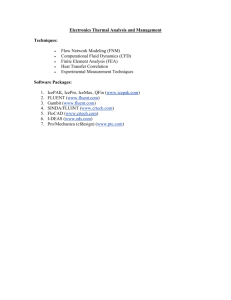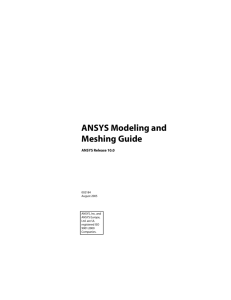midplane meshing
advertisement
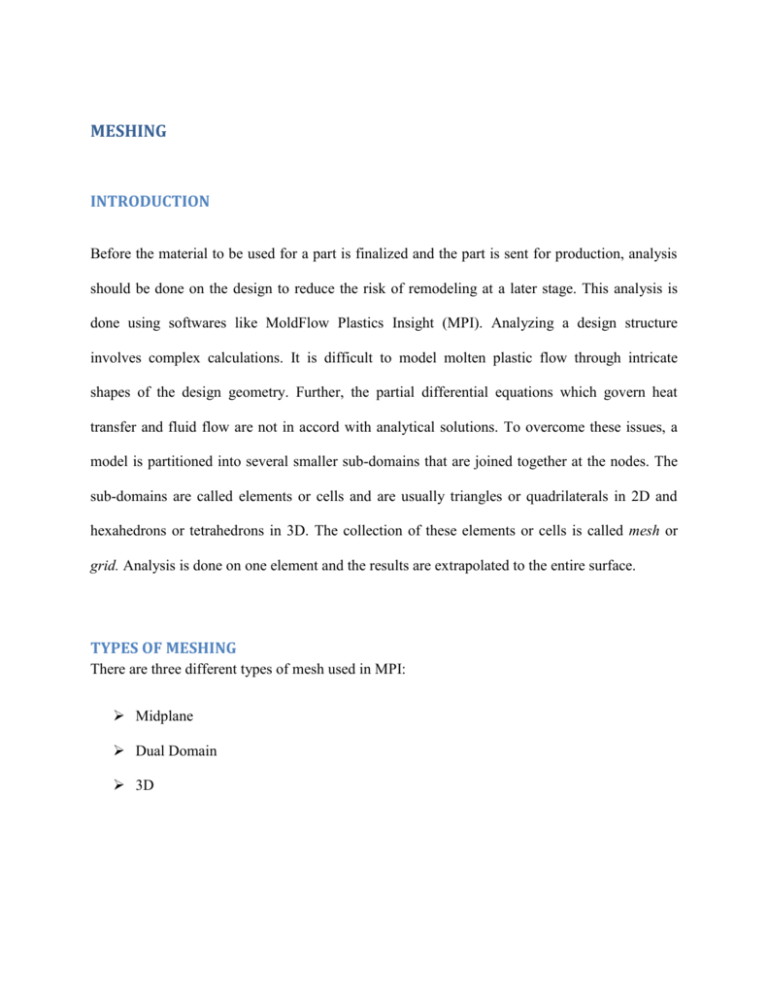
MESHING INTRODUCTION Before the material to be used for a part is finalized and the part is sent for production, analysis should be done on the design to reduce the risk of remodeling at a later stage. This analysis is done using softwares like MoldFlow Plastics Insight (MPI). Analyzing a design structure involves complex calculations. It is difficult to model molten plastic flow through intricate shapes of the design geometry. Further, the partial differential equations which govern heat transfer and fluid flow are not in accord with analytical solutions. To overcome these issues, a model is partitioned into several smaller sub-domains that are joined together at the nodes. The sub-domains are called elements or cells and are usually triangles or quadrilaterals in 2D and hexahedrons or tetrahedrons in 3D. The collection of these elements or cells is called mesh or grid. Analysis is done on one element and the results are extrapolated to the entire surface. TYPES OF MESHING There are three different types of mesh used in MPI: Midplane Dual Domain 3D MIDPLANE MESHING In this type of meshing, the thickness of the part is calculated and a surface plane is allocated and passed through the center of the thickness. This surface is then divided into small triangular elements that are joined along their edges and corners (nodes). The thickness of the part at each node is noted. This measurement is then incorporated by the analysis and the thickness of the part is partitioned into thin layers called laminae. This presents a defined part volume on which computations can be performed. To use this type of meshing, it must be ensured that the CAD package used can directly generate a Midplane model. DUAL DOMAIN MESHING In this type of meshing, the surface of the model is covered with small triangular elements and hence, it represents a solid CAD model. The triangular elements are joined along their corners and edges, called nodes. The model can be imagined to look like a hollow body covered with a surface shell. During the analysis of the part, the volume of the model is characterized by usually 10 or more layers through the thickness of the part. It is essential that there are matching elements on the opposite faces of the part to build these layers. The alignment of the layers through the thickness is ensured by these matched elements. The layers facilitate an accurate representation of the thin cross sectioned parts, where there is a rapidly changing characteristic profile such as temperature and flow front velocity. 3D MESHING In this type of meshing, the volume of the model is made up of four-node, tetrahedral elements (tetra) that are joined along the edges. Tetra gives an accurate three dimensional representation of the model and thus, this type of meshing works well for parts that are thick or solid. Further, this mesh is more advantageous as it does not make the assumptions that are made in Midplane and Dual Domain meshes. Taking all these factors into consideration, 3D meshes take more computation time to complete and as such are more appropriate for thick, complicated parts while Midplane and Dual Domain meshes are more suited for thin-walled, hollow, shell-like parts. Of the three types of meshes discussed above, Dual Domain mesh is most commonly used as: Most part geometry is shell-like in appearance which is most appropriate for this type of meshing. Mid-plane meshes need more clean-up compared to Dual Domain meshes. This makes them, more complicated and time consuming. In case an analysis is required that be performed only on a Midplane mesh, Dual Domain mesh id first generated in an external CAD package and then imported as a Midplane mesh. A 3D mesh requires a good Dual Domain mesh as its starting point. After importing, it is then converted into a 3D mesh. ERRORS IN MESHING In CAD programs, several simple surfaces are combined together to form the final design and thus, represent a complex model. When importing such complex models into MPI or while meshing, the interface between these separate surfaces can be misinterpreted. This is the reason for many errors, especially in the areas of fine detail. Though minute details like surface texture, fillets and small radii are important to the finished product; their inclusion usually leads to unnecessary complexity during mesh generation. In MPI, if errors are found during meshing, the Mesh Repair Wizard is run to check for and repair most of the common defects. SNAPSHOTS OF DENTAL BRACKET AFTER MESHING Isometric view Front view Top view
